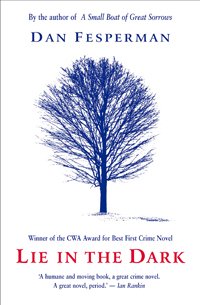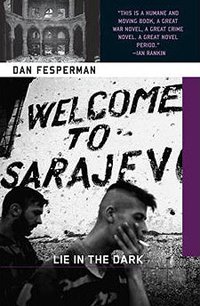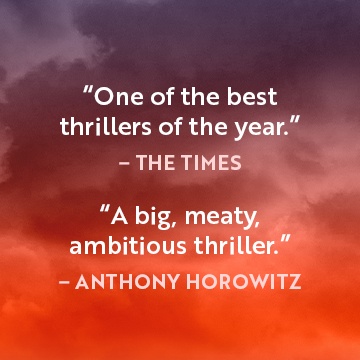Certainly, some will argue that Lie in the Dark by Dan Fesperman can’t be a crime fiction classic. Originally published in 1999, it’s not old or even that widely read, and I’m not sure many authors have cited the book as an influence. Yet it has won praise from the likes of Ian Rankin and Val McDermid because it is a wonderful detective story that worms its way in and out of one of the most unusual, fascinating, and darkly moving settings seen in the genre.
The story is set in Sarajevo between 1992 and 96, when the city was under siege by the Serb army. It begins with police detective Vlado Petric watching through one of the few intact panes of glass left in the city as undertakers bury the dead in a nearby football pitch. If burying people under a sports field is odd, his job is utterly absurd. And he knows it. Petric and his partner Damir Begovic investigate murders in a city where people are being shot by snipers and blown to bits by mortars daily. Every now and then there’s a domestic murder and, trying to maintain a semblance of normality, they find suspects, question them, and make arrests.
One night, near the police station, a man is shot in the head. It’s by the river, with snipers on the opposite bank so it looks like a casualty of the war. However, on closer inspection it turns out he was shot at close range with a handgun. What’s more, the victim is Esmir Vitas, security chief of the nascent Bosnian interior ministry. Due to the man’s high office, Petric expects the case to be torn from his grasp and swept under the carpet. However, to keep NATO happy and thereby to maintain the flow of relief into the city for the starving civilians, Petric is told to investigate and report back. Vitas’ replacement Kasic – a particularly slimy bureaucrat – swiftly points our hero towards various nefarious groups that Vitas might have offended – smugglers, black marketeers, gangsters-cum-local-militia, and so on.
Petric discovers that while Vitas trod on plenty of toes, the murder wasn’t about the local currency in cigarettes, smoked meat, sugar or gasoline. No, Vitas was either investigating, or participating in, the pillage of Sarajevo’s artistic treasures and it’s all to do with a set of index cards indicating where the artworks are.
He leads us around a city that is beyond desperate, and Fesperman evokes scenes of hope here and total resignation there. Just going to the shops, people have to take cover from the snipers. Occasionally someone loses their mind and strolls into the open to be gunned down. In fact, Petric has to save partner Damir from this fate. Elsewhere, he meets a friend running what would be a speakeasy in an old hardboiled novel. Videotapes of American movies are shown, and the audience gape lustfully whenever there are scenes involving food. An orange is a luxury Petric hasn’t eaten in two years. He hasn’t seen his wife and baby daughter in that time either. They managed to escape to Berlin in a refugee convoy.
Pursuing the index cards he runs the gauntlet, driving out into a peninsular Bosnian suburb with Serb guns on the hills either side. It’s to visit Milan Glavas, a remnant of pre-WWII Yugoslavia, who knows more than is safe about Bosnia’s art treasures. Petric also slogs it up to a militia camp to speak to Neven, a gangster who now leads the men entrenched on the frontline. Perhaps this fellow is safer facing the Serbs than he’d be down in Sarajevo. During his night on the front, Petric sees the bloody randomness of the war first hand, and wonders about the future for these young men.
He struggles to unravel the actual murder, but does discover that the art smuggling involves NATO personel, bureaucrats in Sarajevo, Bosnian gangsters and maybe even Serb commanders who are bombarding the city. Solving the murder will put him in grave danger, but not solving it will destroy the only thing he has left – his integrity. Through hunger, cold, filth and loneliness, Petric is stoic. At one turn, he gives in and brings a prostitute back to the station late at night. But he can’t go through with it. When he meets her again later on in the story the author looks at the human cost of war from an entirely different angle. We see, very sensitively, that she’s a normal woman who wants the best for her children, like everyone else. What can she do, her husband dead, in the middle of a brutal ethnic conflict?
There is so much more to Lie in the Dark than a simple crime story. It deals with everything from human dignity to the value of art and culture, and on to what the war between the Serbs, Muslims and Croats really boiled down to. Populations whipped into ethnic hatred and rushing out to kill or be killed, while generals, bureaucrats and kingpins lined their pockets. At the same time, the crime story here is as gripping as it gets, with an ending that’s brilliantly conceived.
The book’s legacy? Well maybe this website wouldn’t be here if it weren’t for Lie in the Dark – it’s one of the books that got me hooked on crime fiction. The novel seems all the more poignant now that we know what really happened, not just in Sarajevo, but in Mostar, Srebrenica and many other places. Fesperman went on to write another Petric novel entitled The Small Boat of Great Sorrows. He seemed to find his groove writing thrillers and espionage novels that turn on the tricky issues that come out of major conflicts, from World War II to 9/11, and beyond. In terms of detective stories, he hasn’t quite hit the heights of Lie in the Dark again. However, maybe a new Petric novel wouldn’t be a bad idea?
No Exit Press has released a reprint of Lie in the Dark with a new, white cover.












